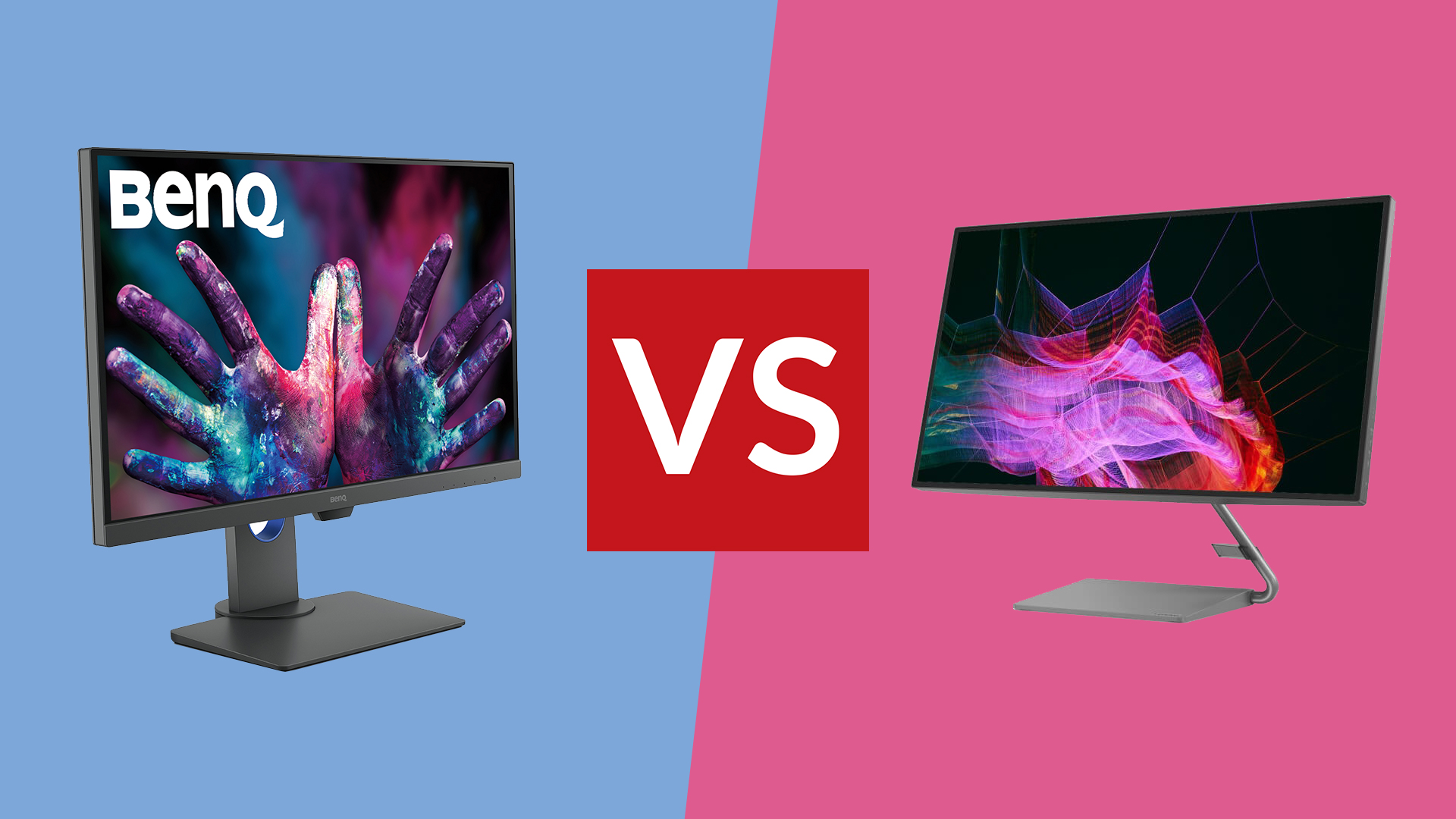
QHD is a great resolution for office monitors, our BenQ PD2705Q vs Lenovo Q27h-10 face off pits two popular QHD options against each other. QHD is a resolution of 2560x1440, giving you sharper resolution than 1080p Full HD, but without the cost of going all the way to 4K.
It’s beloved of PC gamers, graphic designers, and anyone else who appreciates the bump in resolution without having to buy beefier computer to drive a 4K screen. Even just document work benefits from the extra canvas it gives you, or the extra sharpness for reading.
These two monitors have more than just the resolution in common, though – they're also both 27-inch screens with USB-C connectivity for single-cable connections, meaning they're among the best monitors for MacBook Pro, as well as working great with any others of the best laptops.
Both deserve to be on your shortlist if you're looking at mid-range monitors, but which is right for you? Let's see what they both have to offer.
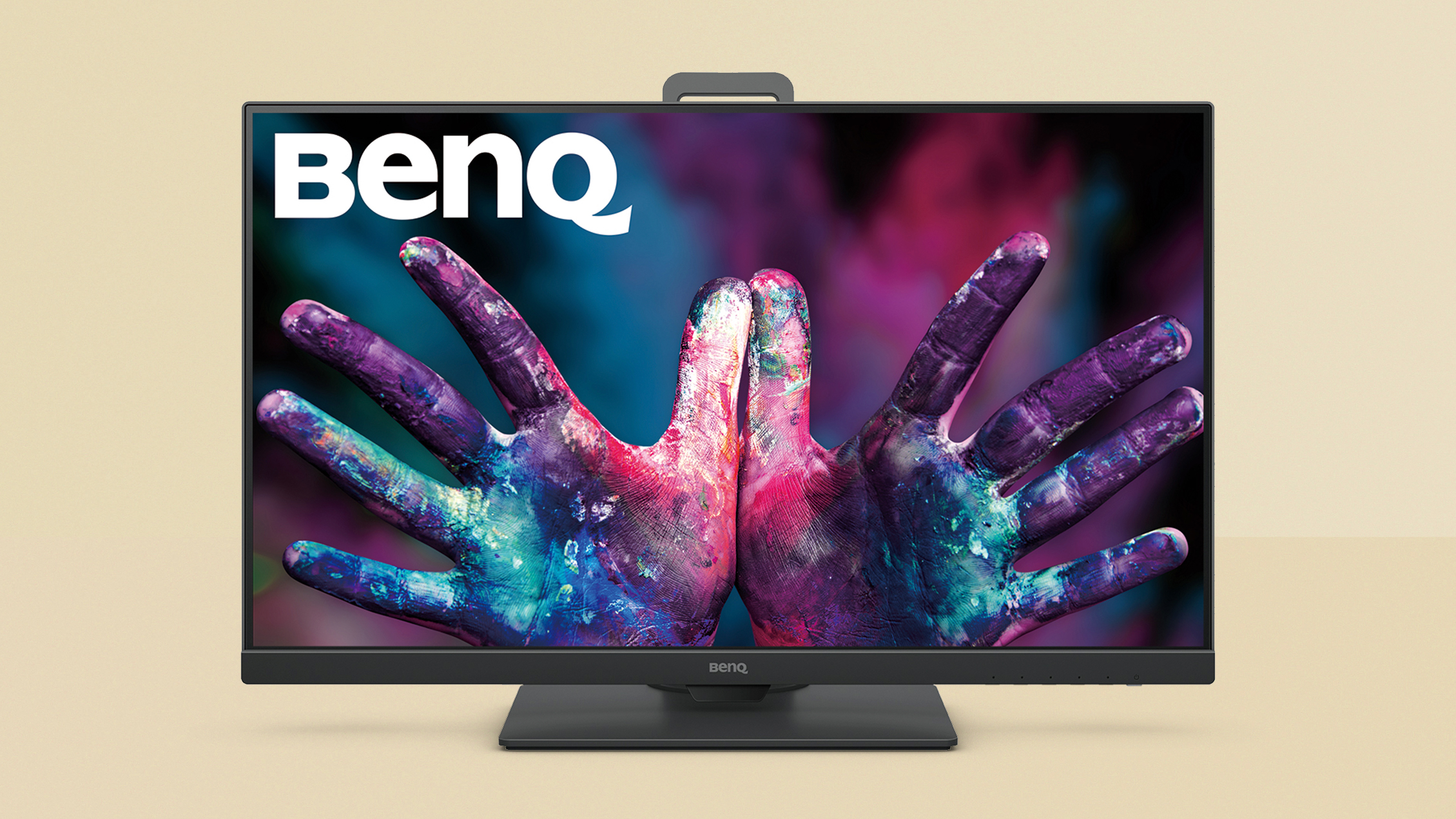
The Benq is impressive value considering its featureset.
BenQ PD2705Q vs Lenovo Q27h-10: Price & features
The Lenovo is the cheaper of the pair in the UK, with an RRP of £300, while the Benq will set you back £349. In the US, they both cost $399. Of course, there are often price drops – you can find the current lowest prices below.
They’re both what you might call ‘productivity panels’, so are geared toward an office environment. To that end, you’ll find USB hubs on the back of both screens, with the Benq going as far as providing full KVM functionality so you can switch between using two different computers with one keyboard and mouse.
They both have USB Type-C connections, so you can plug a laptop in over a single cable that provides video, data and power. The Benq allows you to daisy-chain this to a second monitor through a dedicated DisplayPort Out socket.
Sign up to the T3 newsletter for smarter living straight to your inbox
Get all the latest news, reviews, deals and buying guides on gorgeous tech, home and active products from the T3 experts
The Benq has HDR10 support and comes with colour calibration pre-sets that will please designers and photo editors – chain two together and the colours they display will be the same, something other monitors can’t always promise. The Benq displays 100% of the sRGB and Rec.709 colour gamuts, another hint that this is a screen aimed at the thick-framed glasses and expensive coffee community.
The Lenovo can’t quite compete, its 70Hz refresh rate and AMD FreeSync support pushing it toward the gamers. It doesn’t have quite so many USB ports, lacks HDR, and can’t boast the colour management features of the Benq.
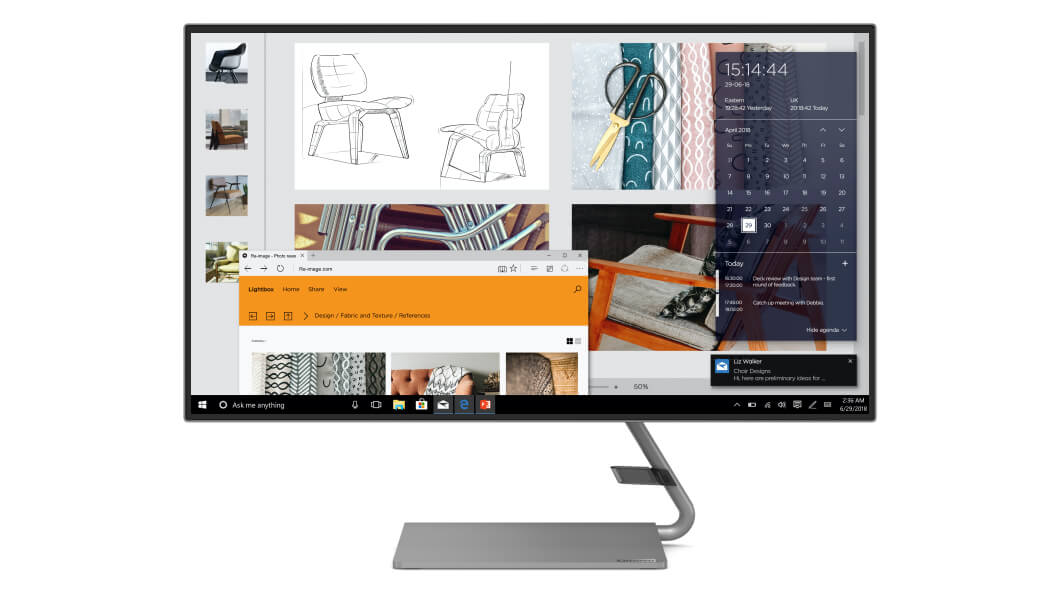
The Lenovo Q27h-10 has a strong IPS panel.
BenQ PD2705Q vs Lenovo Q27h-10: Image quality
Both screens are IPS panels with LED backlights, and that’s about as good as you’re going to get at this price-point. The Lenovo has a 60Hz refresh rate, and the Benq manages 75Hz and HDR10, but neither has anything that marks it out from many other similar screens on the market.
You won’t be disappointed with the picture that either of these screens puts out, but neither will you be particularly wowed by it – the accuracy of the Benq's is its selling point, more than razzle dazzle.
Owners of new MacBooks will appreciate the Benq’s M-mode setting, which communicates through the USB Type-C connection to match the screen calibration of your laptop, meaning that you can move between the two and know that things will look the same, which is a very handy thing to have made this easy.
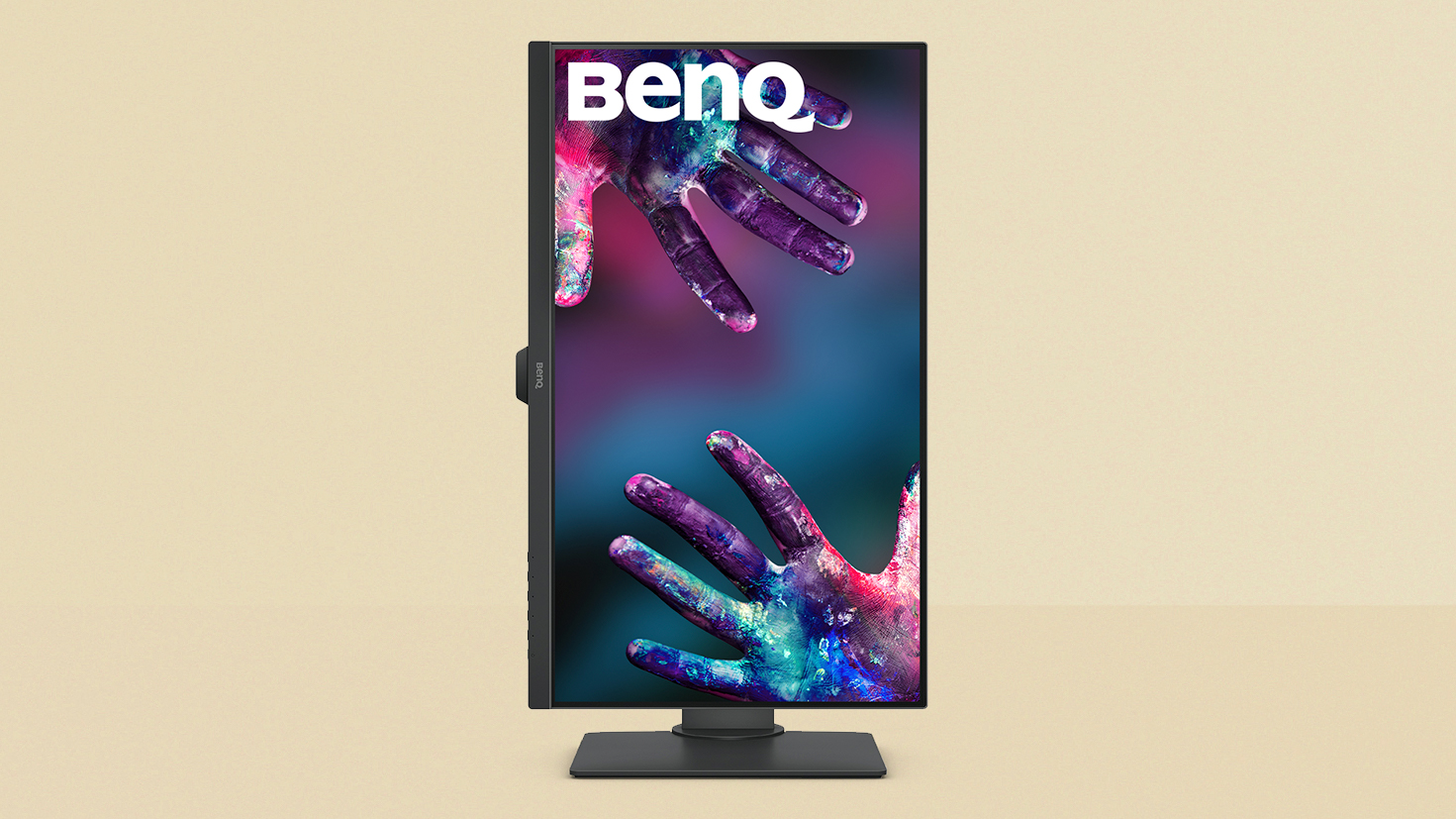
The Benq has a more adjustable stand than the Lenovo, though is plainer looking.
BenQ PD2705Q vs Lenovo Q27h-10: Design & connectivity
The Benq comes with a removable stand that adjusts tilt, height, pivot and swivel, making it easy to get it ergonomically right for you.
The Lenovo comes with something else. It’s certainly lovely to look at, with a wedge-shaped base and support arm that gracefully rises from one side of it, producing an asymmetrical look as it angles across to join the screen at the rear. As a pairing for your smart-looking MacBook, it's great. However, all you can do with it is tilt it up and down. Any height adjustment would have to be made with a riser or similar.
With its four thin bezels, the Lenovo looks something like a giant iPad floating on its arm, and it’s a trick the company reuses in its all-in-one PCs. The Benq has a thicker bottom bezel, but its top and sides are pleasingly thin too.
When it comes to hooking either of these screens up to a video source, you’re not going to be disappointed. Both have DisplayPort, HDMI, and USB Type-C connections, though they differ ever so slightly.
On the Benq you get HDMI 2.0 and DisplayPort 1.4 – both are 4K-capable connections that aren’t really needed on a 1440p panel. On the Lenovo, these are the lower-spec HDMI 1.4 and DisplayPort 1.2, which are perfectly suitable for the resolution on offer.
The Benq is also capable of charging your laptop at 90W through that diminutive Type-C port, while the Lenovo can only manage 65W. The latter should be fine for ultraportable laptops or smaller pro laptops (such as the 13-inch MacBook Pro), but if you'll have something like the 16-inch MacBook Pro performing intensive tasks that run it flat out for a long time, you'd need the extra power of the Benq.
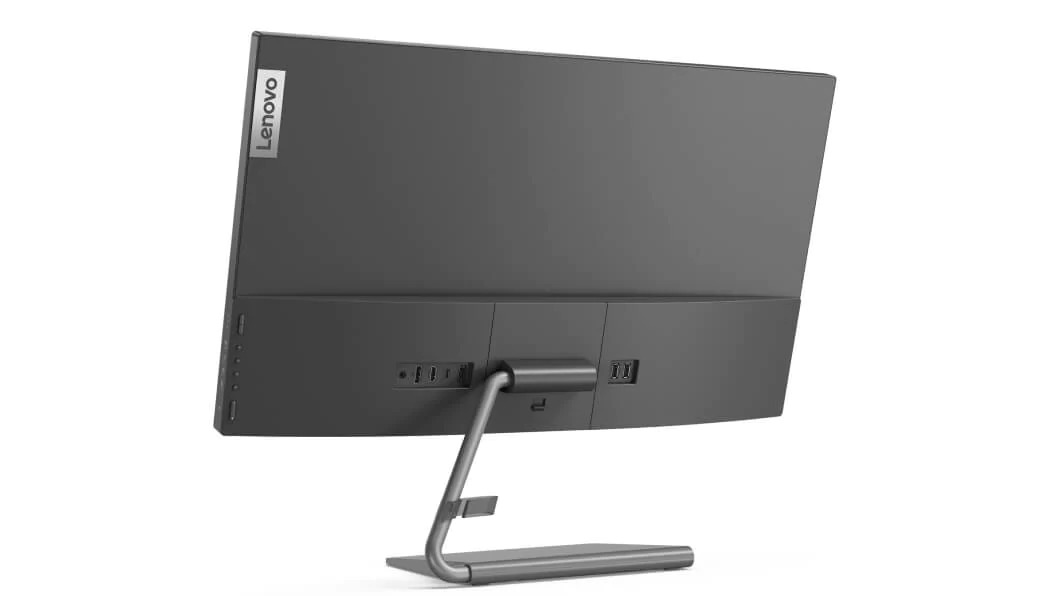
The Lenovo's connections are useful for a minimalist home office setup.
BenQ PD2705Q vs Lenovo Q27h-10: Verdict
If you’re not a designer, then save the cash and get the Lenovo – just be prepared to possibly add something to physically adjust the height if you're tall. Anyone who looks at Adobe or Serif software all day, or those in other professions where colour accuracy matters and MacBooks are the laptop of choice, could do far worse than picking up the Benq.
Compared with screens such as the MSI Prestige PS341WU, these 27-inch QHD models are no longer the pinnacle of monitor design. The IPS LED panels, however, with their excellent viewing angles and crisp contrast, are still among the best you can get without shelling out for much higher-tier technologies, so anyone looking for an extra monitor to complement a new laptop purchase, but not wanting to break the bank, should be looking directly into either of these options.

